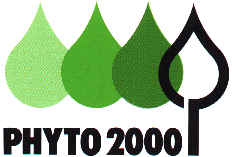
 | ONCOBIOLOGY : EXPERIMENTAL SCHEMES | |||||||||||||||||||||||||||||||||||||||||||||||||||||||||||||||||||||
This study is meant below (downstream) the affection, when it is set and until its ending, but also above (upstream) it in an attempt to find all the preparing factors and those which have been part of the disease's genesis. Whether these factors have an intrinsic or extrinsic origin, both most of the time, they converge in throwing the organism off balance to the nucleocellular breaking point marking the tumoral start.
This study also considers in their present state and in an evolutive way all the physiological elements maintening the acquired balance.
Intrinsic factors :
They represent at all times the functional expression directly resulting from all the organism building elements (from genes to constituted organs, from their activities to their management), within themselves, between them or facing the extrinsic factors.
Extrinsic factors :
They dismiss no elements from each person's relational life, within or facing his circle, his architectural and climatic environment, in his private or socio-professional life, within his body reaction to all the traumas and soft or painful stresses.
Maintenance of physiological elements :
They hold a fundamental importance for the present and future evaluation because from their inventory will come out valuable informations such as the precise and evolutive relationship between the host and his disease, the timing of the therapies to be applied with their emergency order, the prognosis to be viewed at all terms. They represent the visible side of the organism fighting in reaction against itself, against its disease, against its external agressors.
They comprehend all the management and service elements afferent to this reactive set, whether their are within the sick organ or in the metabolically related organs, by themselves or through each agent necessary to all these functions good working order, such as enzymes, vitamins and other trace elements.
Remedies :
They mean all therapeutic acts gathered in order to support the organism for its own safeguard facing itself, facing its disease an even often facing the specific etiology therapeutic act that favours the disease's eradication.
They are compelled to be compensatory, aiming to restore the organism's minimal basic reserves essential to its ability to adapt to each situation it will face during its evolution.
They will be functionnally etiological in order to attempt to restore a non-isopathogenic order.
Main compensatory remedies :
Set of nutriments qualitatively and quantitatively adapted not only to the temporary needs of the organ, of the organism in their punctual fight and in their personal and relational balances permanent upholding, but also in evicting the elements liable to support, extend or enhance the pathogenic agent.
They can be divided into constitution nutriments, including major organic constituents such as carbohydrates, lipids and proteins, essential to the organism's fundamental needs, either punctual facing the disease and its evolutives modes or lasting to maintain or restore the adaptation, and into nutriments bringing the elements that the organism cannot usually synthetize (enzymes, vitamins, trace elements).
They finally mean a set of nutriments necessary to the optimal action of the etiological remedies either specific or "inductive" said of "terrain", i.e. all therapeutic agents that, at each evolution step, prepare, clean and restructure the organs essential to their activity and those suffering from their consequences.
According to each case, they will be brought under various galenic forms, including food.
Vitamins and cancers :
A certain number of vitamins hold a solid and fiercely fought reputation of an anti-oncogenic power Their choice appears to have generally been made on the only criterium of their well known participation to regulating, restoring and saferguarding some tissular structures. This simple selective mode shows offhand its limits and the controversy's nature, and constitutes a stern warning regarding the strictness of their use.
Even if their efficiency, in a standardized preventive use, does not appear questionable, they cannot be a life insurance. This general prevention part may find, with certain reasons for being and some chances of efficiency, a community of use at the setting of the confirmed remission stages. On the other hand their use during a mitotic activity period demands a great adaptative accuracy in order to have a good chance of acting. Actually, a dose misadjusted to the particular case will have for minimal risk to fulfill the basic needs increase partly or fully, without guaranteeing an optimal maintenance, the only one capable of protection, but with a not inconsiderable risk of potentializing a polymitotic cellular activity.
It will avoid to substitute an agression for another by respecting the posologies which, without lessening the medicinal plants action, allow to avoid as much as possible all side effect symptoms.
The model proposed here, without foreseeing the particular treatment established after a suited clinical examination, rests on the oncogenetic state's specific activity.
Example of a general catalytic complementation prescription :
Function :
Advantages :
Disadvantages :
Frequency :
Sources :
Function :
Advantages :
Disadvantages :
Frequency :
Sources :
Function :
Advantages :
Disadvantages :
Frequency :
Sources :
Function :
Advantages :
Disadvantages :
Frequency :
Sources :
Functions :
Advantages :
Disadvantages :
Frequency :
Sources :
Functions :
Advantages :
Disadvantages :
Frequency :
Sources :
Functions :
Advantages :
Disadvantages :
Frequency :
Functions :
Advantages :
Disadvantages :
Frequency :
Sources :
| Les BONNES FEUILLES, the newsletter of PHYTO 2000 is now open to ADVERTISING as long as Products are directly linked to this form of medicine. Mailed to all its suscribers and available on all medical sites, as well as specialized Pharm-stores, this quarterly magazine has a 5.000 ex. coverage. Thus you will IMPROVE YOUR IMAGE and help our Scientific research. For all information, please Email PHYTO 2000. |